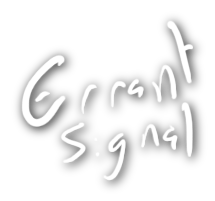-
Video Metaphors #2: Death In Narrative Driven Games
What do you mean, the protagonist was shot repeatedly and then blown up?! He’s not supposed to die! He’s the hero! Tell him to get right back to the last checkpoint and do the whole scene over until he gets it right.
Note that if anyone has any suggestions for other video metaphors, I’m all ears. I’d love to get a collection of videos going.

4 Comments
Sam
November 8, 2011 at 7:06 AM
Subverted in Prince of Persia: Sands of Time in which each death is a mistelling of the story by the Prince. “Wait, that’s not how it happened.” I wish more games would do interesting things with framing death, or working it into the story in an elegant or classy way.
At the moment it seems to be a huge problem in storytelling in games that everyone just… uh… ignores. I’d say that is partly because it’s one of those things we have just learned to accept when going into a video game. We are polite enough to ignore the canon of player death or failure so we can let the game suspend our disbelief.
I love this story by Duncan Fyfe, because it culminates in a message about death in video games. It’s a weakness of the medium, but it means we can use it to convey something which other narrative structures cannot. There are a fair number of games which have explored this, but certainly not enough. I’d list a few if I weren’t so lazy.
But if my character can respawn with knowledge of what is going to happen in the future, I want a game to acknowledge that. I want my goddamned Groundhog Day video game.
Melnorme
December 24, 2011 at 9:05 AM
Planescape Torment, my friend.
Jakale
February 12, 2012 at 10:03 PM
I think Gandalf’s “A wizard arrives precisely when he means to” line could probably fit for plot convenient NPC interventions.
psivamp
May 18, 2013 at 7:47 AM
The Philip K. Dick short story the Golden Boy, very loosely adapted into the film Next, kinda works like this. The eponymous child has precognition and chooses between possible futures. In the movie, Nicolas Cage dodges bullets by being in a slightly different spot and interrogates someone in one timeline and uses that information in another.